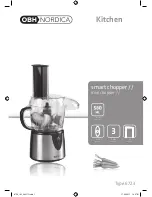Symphony DSP56724/DSP56725 Multi-Core Audio Processors, Rev. 0
11-6
Freescale Semiconductor
Triple Timer Module (TEC, TEC_1)
11.4.2
Reserved Modes
Modes 1, 2, 3, 4, 5, 6, 7, 8, 9, 10, 11, 12, 13, 14, and 15 are reserved.
11.4.3
Special Cases
The following special cases apply during wait and stop state.
•
Timer behavior during wait—Timer clocks are active during the execution of the WAIT instruction
and timer activity is undisturbed. If a timer interrupt is generated, the DSP56725 leaves the wait
state and services the interrupt.
•
Timer behavior during stop—During execution of the STOP instruction, the timer clocks are
disabled, timer activity stops, and the TIO signals are disconnected. Any external changes that
happen to the TIO signals are ignored when the corresponding DSP Core is in stop state. To ensure
correct operation, disable the timers before the corresponding DSP Core is placed into stop state.
11.4.4
DMA Trigger
Each timer can also trigger DMA transfers if a DMA channel is programmed to be triggered by a timer
event. The timer issues a DMA trigger on every event in all modes of operation. To ensure that all DMA
triggers are serviced, provide for the preceding DMA trigger to be serviced before the DMA channel
receives the next trigger.
Figure 11-4. Timer Mode (TRM = 0)
Mode 0 (Internal clock, no timer output): TRM = 0
N = write preload
M = write compare
TE
Clock
(CLK/2 or prescale CLK)
TLR
TCPR
TCF (Compare Interrupt if TCIE = 1)
Counter (TCR)
first event
last event
M
N
TOF (Overflow Interrupt if TCIE = 1)
0
N
N + 1
M
0
1
M + 1


















